5 common small kitchen problems and how to solve them

While the following problems aren’t limited to small kitchens, they are particularly challenging if you don’t have a lot of space. But fret not small kitchen dwellers—we are here to offer up a couple of solutions for these common small kitchen problems.
Solution:
Not having enough storage space is always a big problem with small spaces. With a small kitchen, the shortage of cabinet room for bulky cooking ware is usually the issue. But when it comes to storage, think beyond cabinets.
Look at your existing kitchen or your floor plan. What other areas might you carve out extra space? Is there an unused slice of wall you can hook up a wire mesh, pegboard, metal bars and rods to organise your pots?
How about the sides of your refrigerator or your kitchen counter or that ugly bomb shelter door that sticks out like a sore thumb? Ceiling-hung pot racks are also particularly space-savvy.
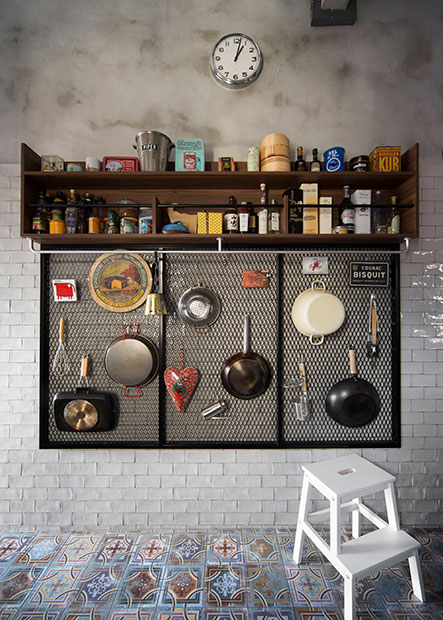



Solution:
Besides storage, having a small kitchen likely also means you will be struggling with countertop space. First and foremost? Don’t put out everything out on your counters. Stow most things away or if you don’t have the cabinet room, use vertical spaces to organise.
Ultimately, streamline your appliances and gadgets because you don’t need fancy ones to cook like a pro. You don’t need a separate steamer or an air-fryer if you have a pot and an oven. Stick with the basics when you have a small kitchen.
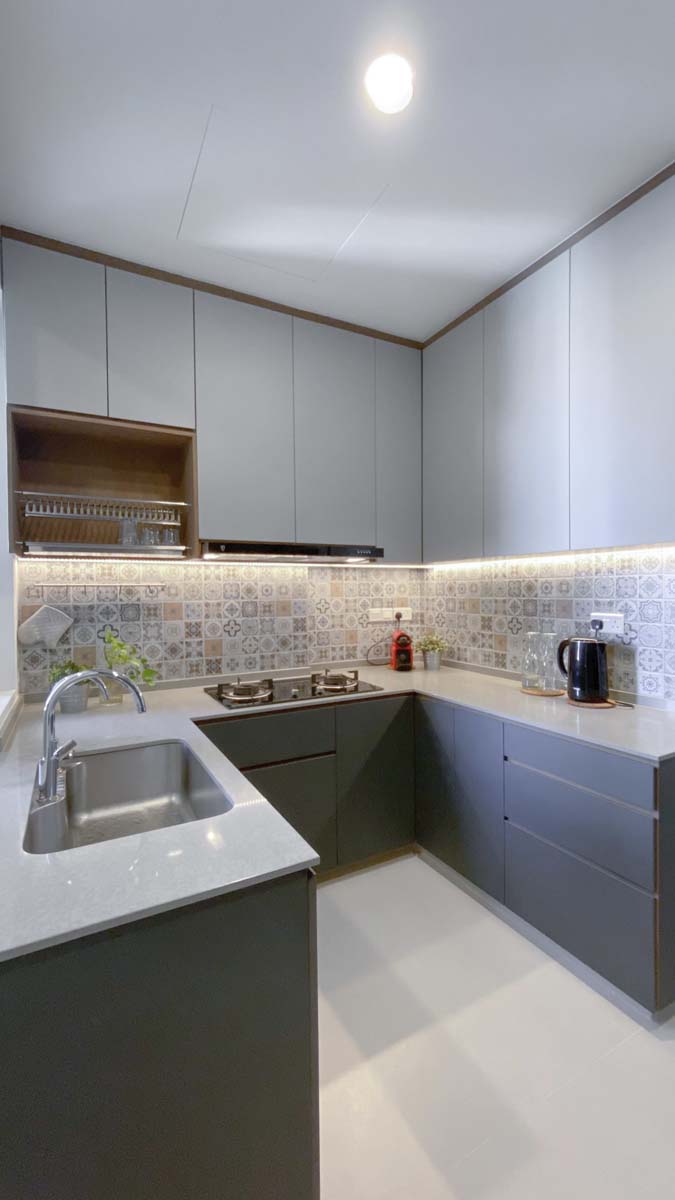
Also, you will want to trim down the size of your hobs and sinks. You don’t need a huge double sink or a 90-cm, 4-burner hob that would take up much needed countertop space for food prep or setting down cooked food.
Single bowl sinks and 60cm hobs or domino hobs (with 30cm widths) are great for smaller kitchens.

There are a few ways you can add on to your countertop space. First, consider a pull-out countertop that can be closed up like a slim drawer after use.
Alternatively, invest in a small and mobile kitchen trolley that comes with a countertop for food prep. This is particularly useful for small spaces since you can get them out of the kitchen after use.


Solution:
Clutter isn’t the sole purview of small kitchens, but small kitchens can get cluttered fast because of the lack of space.
At the design stage, minimising the colours used and sticking with neutrals or going with integrated appliances and full-height cabinets are some ways to cut down on visual clutter in a small kitchen.
Opting out of cabinet hardware and sticking with handle-less cabinets is another way to reduce the appearance of clutter. Plus, with walkways being narrower in a small kitchen, no handles also means you wouldn’t have to bump into them.
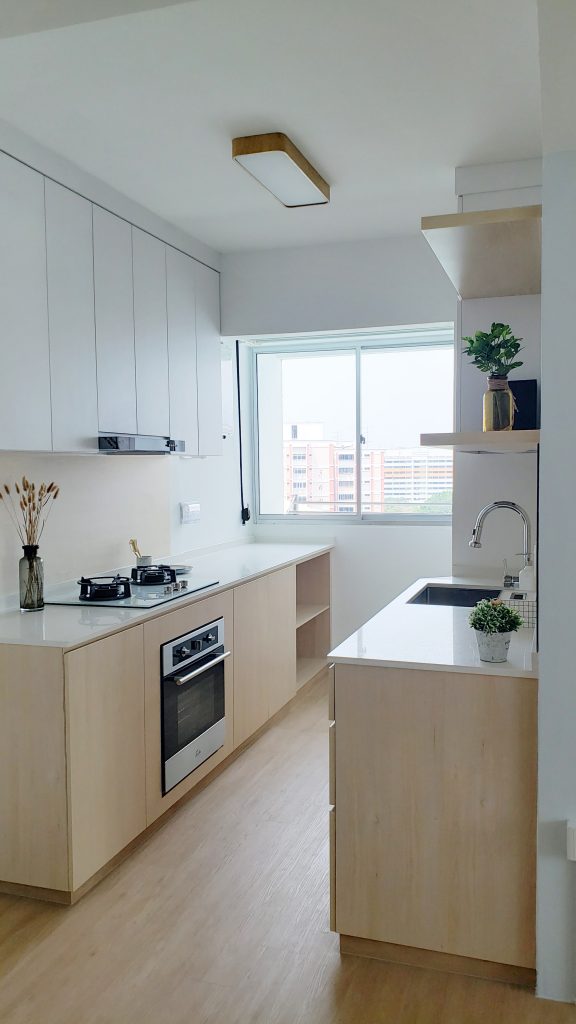
To keep things organised and clutter-free in a kitchen, invest in kitchen organisers from the get-go. Instead of precariously balancing a tall tower of bowls and plates in the insides of your cabinets, get organised with internal racks or shelves for stacking up your wares neatly.
For things like pot lids and trays, holders that hold them upright will ensure they don’t take up unnecessary space and allow them to be accessed easily.
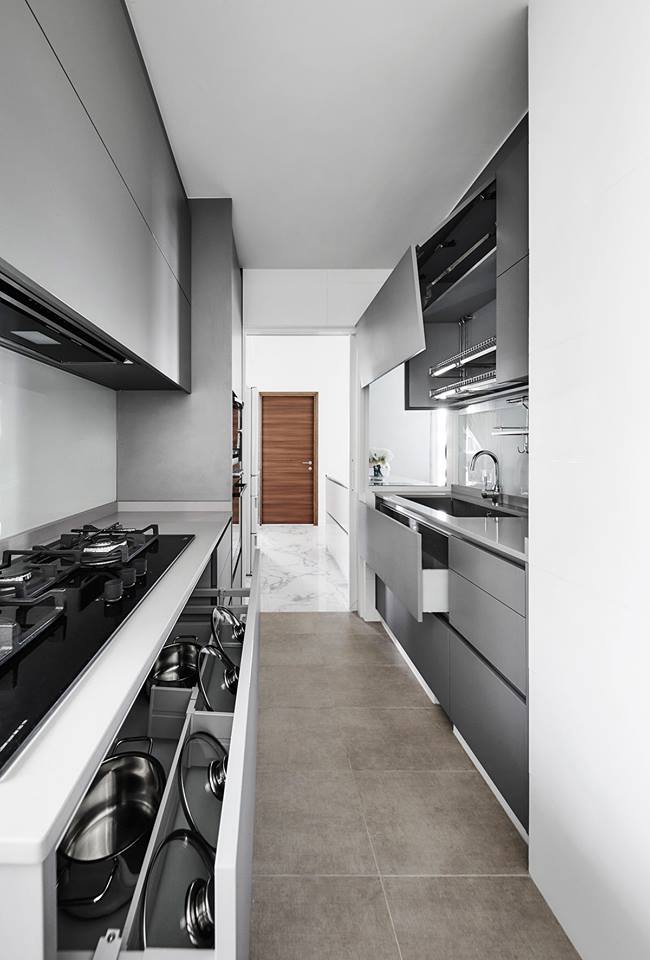
If you are storing things on the outside of the cabinets, pegboards are adaptable and stylish, whilst keeping things looking organised. Go with identical or similar organisers (e.g all baskets or all glass containers) for a clutter-free look.
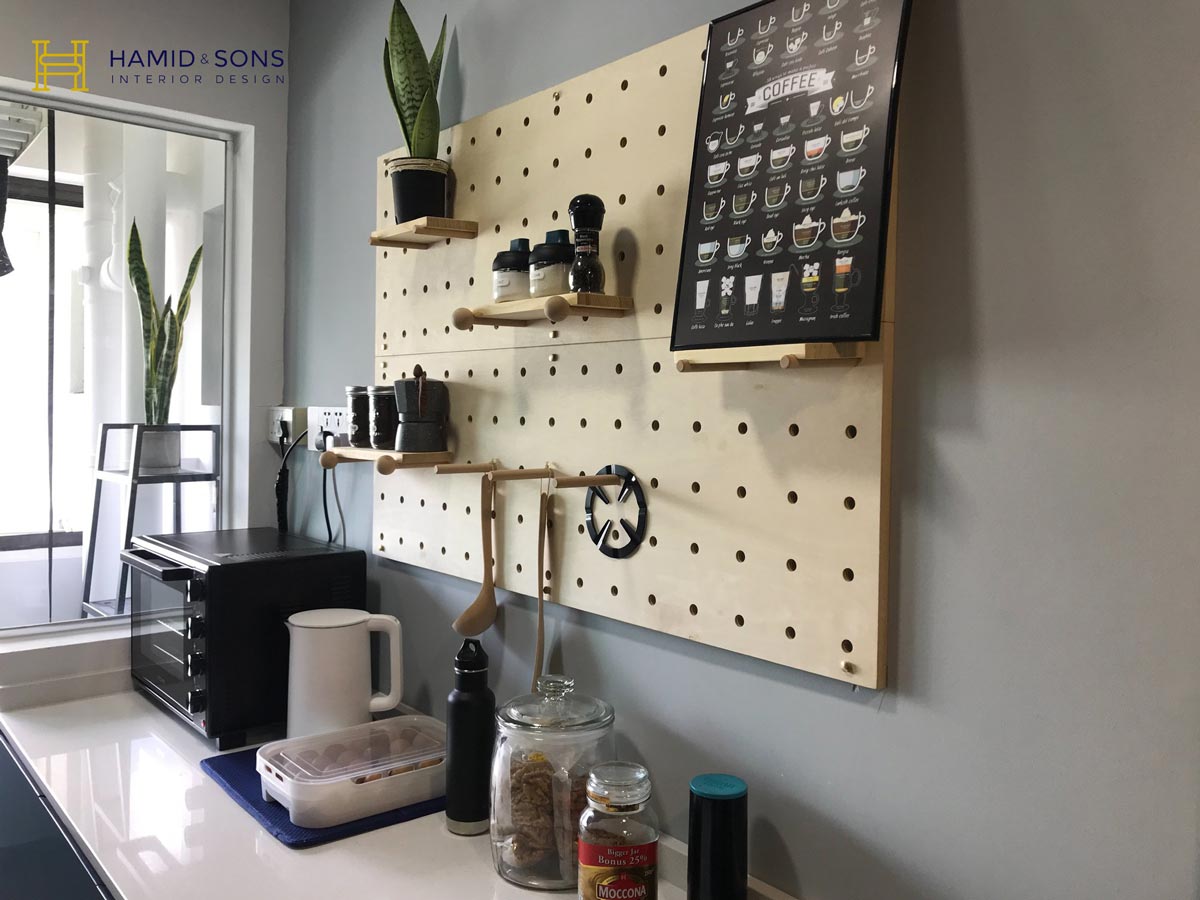
Solution:
With smaller homes, multipurpose spaces are becoming very popular. And the kitchen, as the heart of the home, is one of the main multi-use areas.
If you are thinking whether it’s even possible to eat, work or entertain while maintaining the functions of a cooking space in a small kitchen like yours, chances are, it is.
Fold-up counters or fold-down tables take up just the sides of your countertop or an empty wall. If you can afford to sacrifice some cabinet space, you can remove a part of it and set up counter-height seating for a café-style, breakfast spot.

A concealed pull-out table hidden within the confines of your kitchen counter is another way to make your kitchen more multipurpose, while a raised bar counter on top of an peninsular counter provides the perfect spot for after-dinner tipples with friends.


Solution:
Colour schemes are crucial in impacting how you feel in a space. Light colour palettes and reflective surfaces are great for helping to bounce light around and increase the sense of space in your small kitchen.
It doesn’t have to be white; pale woods and stainless steels are great choices for a small kitchen.

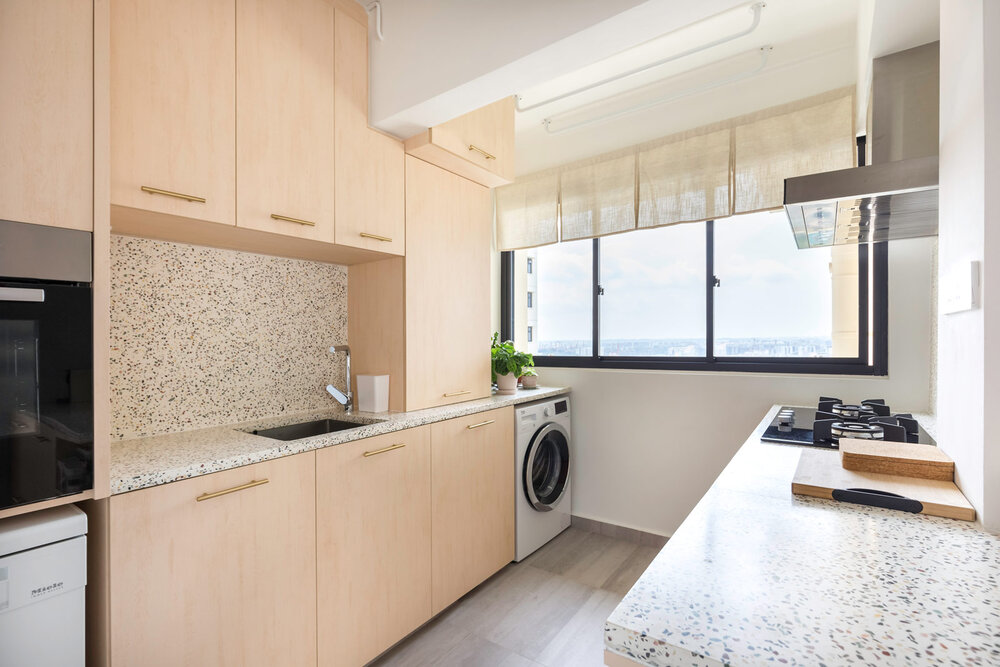
While going open concept or semi-open helps to reduce the closed-in feeling, it’s not for everybody especially if you’ll be planning to cook quite a bit.
Alternatively, ditching the top cabinets may help. But for those who need the storage (read: everybody with a small kitchen), this might not be the best solution.
Open shelves are one option for a light and airy feel, while tall, floor-to-ceiling kitchen cabinets are visually continuous so they make a small kitchen feel more seamless.

Even better are stacked top cabinets set in two different colours with the lower tier slightly recessed in and given a darker shade so that it blends better into the background. See below for example:

Proper lighting is also necessary. You want to make sure windows that bring in daylight aren’t obstructed. Also plan out enough artificial lighting. Evenly distributed recessed lighting make for a good ambient light source in the kitchen.
For boxy kitchens, a single ceiling flush light may be sufficient. Complement with track lights, under-cabinet or under-shelving lights to focus on areas in the kitchen used for specific crucial tasks e.g. food prep, cooking.
Then get in hidden LEDs at the toe kicks to bring up the ambience and mood of your space.

This article was first published in Renonation.